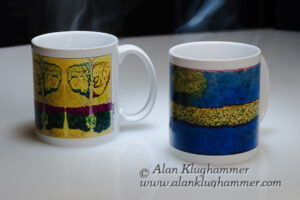I apologize in advance. This may end up being a fairly technical post, but I will try to keep it simple…
I was having an online discussion about when one should use jpg, TIFF or RAW files, and there seemed to be a lot of confusion. Hopefully this helps (at least won’t make it worse…)
First, let’s start with definitions, then later we will get into when to use each one. I am not going to quote wikipedia or get into technical definitions, but let’s get a working idea of what these file types are. File types like TIFF, jpg, png or to a limited extent gif are image files. In other words, they contain data that your computer can understand and display as an image. There are different pros and cons for each type, and I will try to touch that later. So called RAW files with extensions like .cr2, .nef or .raf (representing RAW formats from Canon, Nikon and Fuji respectivly) are NOT really image files This is the raw (hence the name) data coming off the digital sensor{{1}}. There is no direct image information in the file (Most saved raw formats do have an embedded jpg file so that the camera and other software can show a thumbnail, but this is not strictly speaking part of the RAW file information..) This last point is important, so I will repeat it. A RAW file (ok a raw file other than the embedded jpg) does not contain any image information. it just contains the digital signal that comes off the camera sensor. The classic rough analogy is the RAW file is like a negative, a jpg (or tiff or other image file) is more like a print. (This doesn’t quite work because you could still look at a negative and get an idea what the subject was. Colours were tough to see though)
One reason many advanced photographers like to shoot in RAW is that they can use a powerful computer to massage the data in a RAW file to get an output they are happy with. In contrast, to get an out of camera jpg, the RAW file from the sensor goes to a small computer built into the camera where it is massaged with settings put in place by the engineers at Nikon, Canon, or wherever. These engineers are very smart, but they can have no idea what you are taking a photo of, so they have to make assumptions. A lot of the time these assumptions are pretty good (remember, these engineers are smart…) and many people are happy with the decisions being made for them. It is kind of like going into a restaurant and asking the waiter to choose your meal for you. It may be good, but it may not be quite what you want.
Which brings us to image files. Once you (or the camera engineers) tweak the RAW file to your satisfaction, you need to preserve those changes. You need to “bake in” the image preferences so others can see them. (it must be getting close to supper time with all those food analogies). This is where jpg, tiff{{2}} and other image files come in. Before we get there however, I should mention that many image manipulation programs have their own intermediate file types (are you confused yet?). This is so you can re-edit various parameters if you open that file in the future. For example, Adobe Photoshop uses the .psd extension for their files. This file contains the image broken down into its constituent layers, adjustment layers, and so on. If you reopen a Photoshop .psd file you still have access to all these layers, etc. Photoshop files, or the equivalent for other programs like Gimp or PhotoPaint are bigger than the final jpg or tif files because they contain all this intermediate information.
Now we can finally get to the image files. When you send your favourite pictures to other people or a print shop, you want them to see what you see. You don’t necessarily want them to make their own interpretation of the original image. Back to our food analogy, sending a jpg, tiff, or png file is like sending the final cake. A RAW file is like sending the raw ingredients (see what I did there?) like flour, sugar, etc. A .psd file is like sending the raw ingredients along with a recipe. The recipient can change the cake if they choose not to follow your directions.
Of course this is all pretty simplified, but hopefully it makes some sense. Now I am going to make something to eat…
[[1]]There is some minimal processing that takes place between the sensor and the raw file, but for all intents and purposes, it is close enough to the raw data.[[1]]
[[2]]Back in the day, Microsoft’s operating system could only recognize 3 character file extensions after the dot. Files named picture.jpg were fine but picture.tiff (4 characters) caused problems. For that reason, TIFF files often have the extension .tif [[2]]
